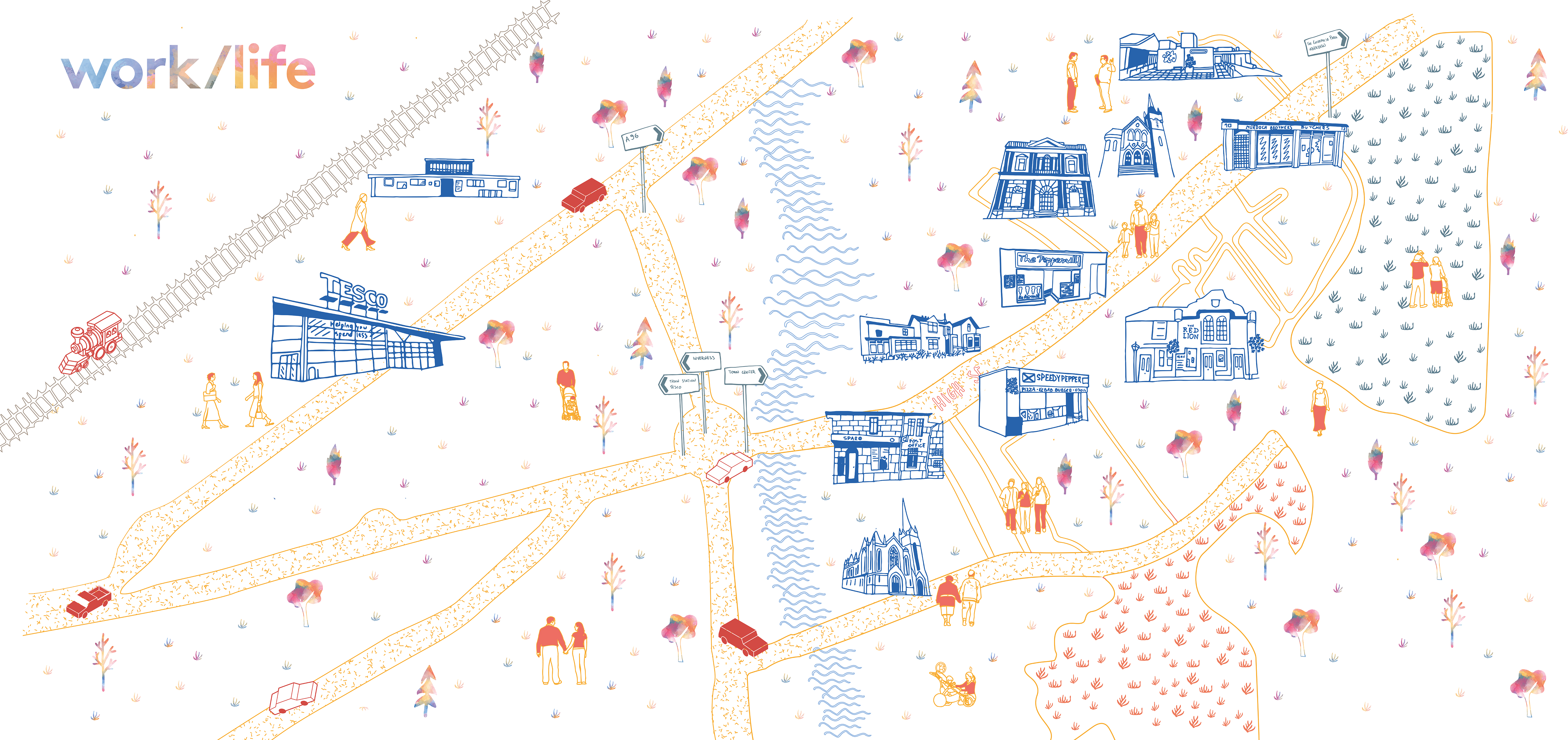Cartographies of Ambition
Spring, 2018
In collaboration with Dominika Swierad, The Innovation School, The Glasgow School of Art, Dr. Emma Murphy and Dr Marianne McAra
Community Engagement, Qualitative Research, Research Analysis
This research project explores the occupational segregation of the working age population in Moray, in particular, it mines the data commissioned, produced or possessed by Highlands & Islands Enterprise as it relates to this population. This data identifies various demographic groupings or population segments as they exist in relation to productive activity, either in paid employment or other value-generating activities.  The Glasgow School of Arts Highlands and Islands Campus
The Glasgow School of Arts Highlands and Islands Campus
The ambition of the project is to identify the statistical populations and explore the factors that constrain or delimit an inclusive and equal participation in the workforce (defined as productive labour, either for paid labour or contribution to social/community enterprise or care). Exploration of stakeholder data combined with analysis of user/citizen experience will be used to generate mapping of factors preventing more equal participation in a productive activity by underrepresented groups/populations.
By visualising the experiential and causal factors, it will be possible to identify more clearly and accurately the nature of possible interventions aimed at ensuring greater and more equal participation in the workforce.
By visualising the experiential and causal factors, it will be possible to identify more clearly and accurately the nature of possible interventions aimed at ensuring greater and more equal participation in the workforce.


Pop-up’s
The sections of the population that we were about to engage with were highly capable and passionate but also experiencing factors that prevented them from expressing those valuable skills in the current job market.
We decided to explore the idea of an alternatively organised workforce, and we decided to conduct some pop-up events in strategic places in the town of Forres to engage with the largest possible amount of members of the community.
The sections of the population that we were about to engage with were highly capable and passionate but also experiencing factors that prevented them from expressing those valuable skills in the current job market.
We decided to explore the idea of an alternatively organised workforce, and we decided to conduct some pop-up events in strategic places in the town of Forres to engage with the largest possible amount of members of the community.
We asked them about the passions, special knowledge or skills that they felt proud of, not necessarily related to formal qualifications. This information was recorded on branded postcards and supported by a map of Forres, where the participants could note the areas where their activities were taking place. To maximise our reach, we positioned some postboxes in 4 busy locations in town (Tesco, Community Center, Credit Union, and the Library), where visitors could fill in a postcard and leave it for us to collect. We gathered more than 240 postcards that we organised by categories.


Workshops
We engaged groups of participants in workshops, in particuòar focused around young mothers and high school and college students.
We designed our workshops divided into three main sections.
As an ice-breaker activity, right after a brief introduction, we asked the participants to fill in the same postcards we used in our pop-up events to gather data about their passions.
We engaged groups of participants in workshops, in particuòar focused around young mothers and high school and college students.
We designed our workshops divided into three main sections.
As an ice-breaker activity, right after a brief introduction, we asked the participants to fill in the same postcards we used in our pop-up events to gather data about their passions.
In the main phase of each workshop, we connected the data gathered on the postcards with the territory using the large format maps, where the participants could gather around. We used this phase to start conversations about opportunities and logjams in the area, leveraging the geographical format to organise them.
In the final phase, we challenged the group to a small co-designing task: different for each workshop, we asked the participants to re-imagine an object or service related to one of the issues explored.
In the final phase, we challenged the group to a small co-designing task: different for each workshop, we asked the participants to re-imagine an object or service related to one of the issues explored.

Analisys
After the field work, we analysed all the visual and written research. We extrapolated main themes and insights from the transcripts, and we mapped them adding another layer of analysis by drawing connections of interdependence between different issues.
After the field work, we analysed all the visual and written research. We extrapolated main themes and insights from the transcripts, and we mapped them adding another layer of analysis by drawing connections of interdependence between different issues.


